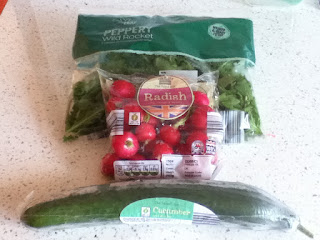Growing Vegetables in containers.
The range of options for what to include in your pots and containers is
really quite bewildering, particularly when you extend the possibilities to
herbs and veg.
While container grown fruits and veggies are also a perfect solution for growing and rotating a huge variety of produce. This isn’t just about living in a small urban space it has a lot more to do with variety, convenience and flexibility. You can move the pots around as required so not only do they enjoy the sunshine to best effect but they are also easy and convenient for you, when and where you want them.
If you prepare in advance and get going early enough and with economy in
mind the best way to begin is to start your own plants off from seed, rather than wait until commercially grown small plants are available in the shops. That way the cost per plant equates to the price of a whole packet of
seeds. You can sow more than you’ll
realistically need for contingency to cover any potential losses.
We’ve started everything from seed ourselves here this year and the scope of varieties we have under way proves that a greenhouse is not a necessity.
For a recap on the full list of what's coming on and how, see the next post 'How Grows It? (June)'.
There are so many obvious advantages to enjoying food
you’ve produced yourself. Just the contemplation of it gives me a kind of little frisson of warm and fuzzy.
There’s no denying that pottering about and shifting garden materials
is an enjoyable and rewarding occupation, so you’re keeping active while producing nourishing
food. That’s a double plus and you’ll be learning all the time.
Healthy body, healthy mind, but the taste is
the real sensation as everything from the supermarket now tastes the same, have
you noticed?
Are you old enough to remember when a tomato tasted like a tomato, a cucumber tasted like a cucumber and spinach had a flavour. Now everything, even once peppery radishes, are bleached of all individuality and pretty much homogenised into one tasteless corpus.
Why is this?
It’s because they are mass produced and forced on in depleted soil, eradicating much of the nutrition we associate with fresh vegetables. In fact research has shown that levels of vitamins and minerals are up to 80% reduced on the food production of 40-50 years ago and this has a knock effect on the taste.
Are you old enough to remember when a tomato tasted like a tomato, a cucumber tasted like a cucumber and spinach had a flavour. Now everything, even once peppery radishes, are bleached of all individuality and pretty much homogenised into one tasteless corpus.
Why is this?
It’s because they are mass produced and forced on in depleted soil, eradicating much of the nutrition we associate with fresh vegetables. In fact research has shown that levels of vitamins and minerals are up to 80% reduced on the food production of 40-50 years ago and this has a knock effect on the taste.
The ubiquitous variable as with almost all things gardening is the need
for sunshine. We’re so dependant on the
aspect of the weather at every stage of the process from seed to table in our
vegetable production. Wind can also be
very damaging not least because it can harm the plant together with its delicate
crop but also because wind can harden the leaves which doesn’t make for tender tasty
leafy veg such as lettuces.
If you’re new to experimenting with growing your own you’ll learn as
you go along but it’s best not to be too ambitious to start with. Stick to simple salad crops which are by and
large reliable and fun as some more demanding vegetable types are not suited to
a container environment.
Although if you’re determined to produce a potato crop this is a possibility as large potato bags are available for this purpose but you’ll have to decide if the outlay on compost and materials is an economic viability in the long run.
Although if you’re determined to produce a potato crop this is a possibility as large potato bags are available for this purpose but you’ll have to decide if the outlay on compost and materials is an economic viability in the long run.
So, what are you waiting for?? But just before you head off out to the potting shed a couple of hard and fast rules:
Supplement with a weekly feed
Water well but DO NOT overwater. The plants need to be kept moist but not water logged
Water well but DO NOT overwater. The plants need to be kept moist but not water logged
Don’t scrimp on the size of the container. The bigger the pot the bigger the crop
Plenty of sunshine
Let’s get growing









No comments:
Post a Comment